Polishing marble countertops is an essential process to maintain their beauty and longevity. Marble, known for its luxurious and elegant appearance, requires regular care to keep its surface smooth and shiny. The process of polishing marble countertops involves several steps, including cleaning, removing stains, repairing damage, and applying a polish. It’s not only about aesthetics; polished marble is more resistant to staining and easier to clean. To begin with, you need to clean the marble surface thoroughly. This involves wiping down the countertop with a soft cloth and a mild detergent solution to remove any dirt, grime, or residue. Avoid using harsh chemicals or abrasive cleaners as these can damage the marble’s surface.
Once the countertop is clean, inspect it for any stains. Marble is porous, which makes it susceptible to staining from substances like wine, coffee, or oil. To remove stains, you’ll need a poultice, which is a paste made from a combination of a cleaning agent and an absorbent material. Apply the poultice to the stained area, cover it with plastic wrap, and let it sit for 24 to 48 hours. Afterward, remove the poultice and rinse the area with water. For more stubborn stains, you might need to repeat this process several times. Always test the poultice on a small, inconspicuous area first to ensure it doesn’t discolor the marble.
Next, address any etching or surface scratches on the marble. Etching occurs when acidic substances come into contact with marble, leaving dull spots or marks. To repair etching, you can use a marble polishing powder. Sprinkle the powder on the etched area, add a little water to create a slurry, and rub it with a damp cloth in a circular motion. Continue this process until the etch marks fade. For deeper scratches, you may need to use fine-grit sandpaper or a marble polishing compound. Always follow the manufacturer’s instructions and use gentle pressure to avoid causing further damage.
After removing stains and repairing etching, it’s time to polish the marble. Polishing marble countertops can be done using a variety of methods, including commercial marble polishes, homemade solutions, or specialized polishing pads. Commercial marble polishes are readily available and typically come in liquid or powder form. Follow the instructions on the product label for the best results. If you prefer a natural approach, you can make a polishing solution using baking soda and water. Mix three parts baking soda with one part water to create a paste, apply it to the countertop, and let it sit for several hours before rinsing it off with water and drying the surface with a soft cloth.

For a more professional finish, you can use a marble polishing pad or a hand polisher. These tools are designed to restore the shine to marble surfaces by gradually buffing out imperfections. Attach the polishing pad to a low-speed hand polisher, apply a small amount of marble polish to the pad, and work in small sections, moving the polisher in a circular motion. Be sure to keep the pad moist and avoid applying too much pressure, which can cause heat build-up and damage the marble. Continue this process until the entire countertop is polished to your satisfaction.
Once the polishing process is complete, it’s important to seal the marble to protect it from future stains and damage. Marble sealers are available in both penetrating and surface-sealing varieties. Penetrating sealers soak into the marble, providing deep protection, while surface sealers form a protective layer on top. Choose a sealer that’s appropriate for your specific type of marble and follow the application instructions carefully. Generally, you’ll need to apply the sealer with a clean cloth or sponge, allow it to penetrate for the recommended amount of time, and then buff the surface with a dry cloth to remove any excess.
Maintaining polished marble countertops requires regular care and attention. Clean the surface daily with a soft cloth and a mild, pH-neutral cleaner to prevent dirt and grime build-up. Avoid placing hot items directly on the marble, as extreme temperatures can cause thermal shock and lead to cracks or discoloration. Use coasters, trivets, and placemats to protect the surface from spills and scratches. Additionally, it’s a good idea to reseal the marble every six months to a year, depending on the level of use and the type of sealer you applied.

Another crucial aspect of maintaining polished marble is being mindful of what substances come into contact with it. Acidic foods and drinks, such as citrus juices, vinegar, and tomato sauce, can cause etching if left on the surface for too long. Wipe up spills immediately to prevent staining and etching. When cutting or preparing food, use a cutting board to protect the marble from knife marks and potential contamination from acidic ingredients. Even seemingly harmless items like flowers or plants can cause damage if they leak water or sap onto the marble, so use protective barriers underneath them.
One of the benefits of polished marble is its reflective surface, which can make a room appear brighter and more spacious. However, this also means that fingerprints, smudges, and dust are more visible. Regularly dust the countertop with a soft, dry cloth to maintain its pristine appearance. For a quick shine between polishings, you can use a spray bottle filled with a mixture of water and a few drops of dish soap. Spray the solution onto the surface, wipe it down with a microfiber cloth, and then buff it dry for a streak-free finish.
Over time, even well-maintained marble countertops may develop a patina, which is a natural aging process that can add character and depth to the stone. While some homeowners appreciate the unique look of patina, others may prefer to keep their marble looking as new as possible. If you fall into the latter category, consider having your countertops professionally refinished every few years. Professional refinishing involves grinding down the surface layer of the marble to remove imperfections and restore its original shine.
In addition to regular cleaning and maintenance, taking preventative measures can help preserve the beauty of your marble countertops. Place rugs or mats in high-traffic areas to minimize wear and tear, and use furniture pads under heavy items to prevent scratches. Be cautious when moving objects on the countertop, and lift them rather than dragging them across the surface. Educate family members and guests about proper marble care to ensure everyone takes the necessary precautions to protect the countertops.
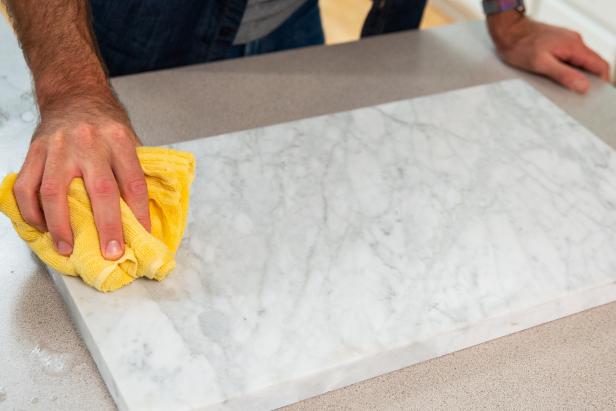
When considering marble countertops for your home, it’s important to weigh the pros and cons. Marble is renowned for its elegance and timeless appeal, but it requires more maintenance than some other countertop materials, such as granite or quartz. Understanding the level of care involved can help you make an informed decision and ensure that you are prepared to keep your marble countertops looking their best. With the right approach, you can enjoy the beauty and functionality of polished marble for many years to come.
Despite its reputation for being high-maintenance, marble is a durable and resilient material when properly cared for. It can withstand daily use in kitchens and bathrooms, and its natural variations in color and veining make each piece unique. Whether you’re drawn to the classic look of white Carrara marble or the dramatic appeal of black Marquina marble, there’s a type of marble to suit every taste and style. By following the recommended steps for cleaning, polishing, and sealing, you can enhance the natural beauty of your marble countertops and protect them from common forms of damage.
Polishing marble countertops is a multi-step process that involves cleaning, stain removal, etching repair, and the application of a polish. Regular maintenance, including daily cleaning and periodic resealing, is essential to keep the marble looking its best. By taking preventative measures and being mindful of what comes into contact with the surface, you can preserve the beauty and functionality of your marble countertops for years to come. Whether you choose to polish your marble yourself or hire a professional, the effort is well worth it to enjoy the timeless elegance and sophistication that marble brings to your home.

Common Mistakes to Avoid
When polishing marble countertops, there are several common mistakes to avoid to ensure the best results and prevent damage. One of the biggest mistakes is using harsh chemicals or abrasive cleaners. Marble is a delicate stone that can be easily scratched or etched by acidic or abrasive substances. Always opt for pH-neutral cleaners and avoid products containing vinegar, lemon juice, or bleach.
Another mistake is not removing stains properly before polishing. Polishing a stained surface can set the stain and make it more difficult to remove later. Ensure that all stains are treated with an appropriate poultice and removed before proceeding with polishing. Similarly, neglecting to repair etching or scratches before polishing can result in an uneven finish. Take the time to address these imperfections with polishing powder or fine-grit sandpaper as needed.
Using the wrong type of polish or applying too much polish can also be detrimental. Follow the manufacturer’s instructions for any commercial polishes and avoid over-applying, which can create a sticky residue and attract dirt. If you’re making a homemade polish, ensure the ingredients are safe for marble and used in the correct proportions.
Failing to seal the marble after polishing is another common oversight. Sealing helps protect the marble from future stains and damage, so it’s an important step that shouldn’t be skipped. Be sure to choose the right type of sealer for your marble and apply it according to the instructions.
Lastly, not maintaining a regular cleaning routine can lead to the build-up of dirt and grime, which can dull the marble’s surface. Regular cleaning with a soft cloth and a mild cleaner will help preserve the polished finish and keep the marble looking its best.
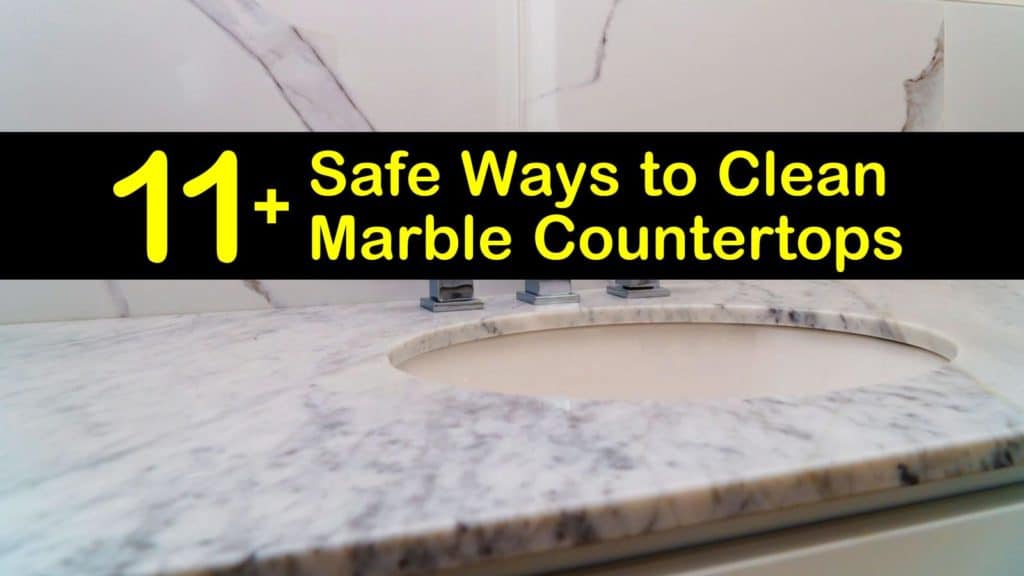
How often should I polish my marble countertops?
Polishing frequency depends on the level of use and the appearance of your countertops. Generally, marble countertops in high-traffic areas should be polished every 3-6 months to maintain their shine and protect them from damage. However, if you notice dullness or etching, you might need to polish more frequently. In lower-use areas, annual polishing may be sufficient. Regularly cleaning and resealing the countertops will also help prolong the polished finish.
Can I use household items to polish marble?
Yes, you can use some household items to polish marble. A common homemade polishing solution involves mixing three parts baking soda with one part water to create a paste. Apply this paste to the countertop, let it sit for several hours, then rinse it off with water and dry the surface with a soft cloth. Another option is to use a mixture of water and a few drops of dish soap for regular cleaning and maintaining a light shine. However, for a more professional finish, consider using commercial marble polishes or polishing pads.
What should I do if my marble countertop gets scratched?
For light scratches, you can use a marble polishing powder. Sprinkle the powder on the scratched area, add a little water to create a slurry, and rub it with a damp cloth in a circular motion until the scratch fades. For deeper scratches, use fine-grit sandpaper to gently sand the area, then polish it with a marble polishing compound. If the scratch is severe, you may need to seek professional help to restore the surface.
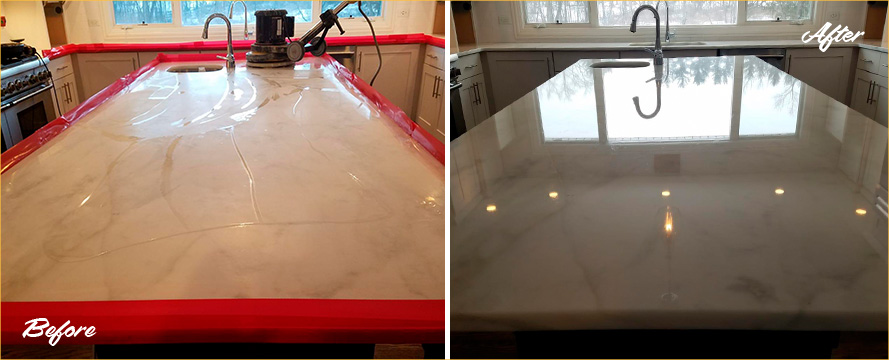
Is it necessary to seal marble countertops?
Yes, sealing marble countertops is necessary to protect them from stains and damage. Marble is a porous stone that can absorb liquids, leading to stains and etching. Sealing the marble creates a protective barrier that helps prevent these issues. It’s recommended to reseal marble countertops every six months to a year, depending on the level of use and the type of sealer applied. Always follow the sealer manufacturer’s instructions for the best results.
Can I use vinegar or lemon juice to clean marble?
No, you should avoid using vinegar, lemon juice, or any acidic substances to clean marble. Marble is sensitive to acids, which can cause etching and dull spots on the surface. Instead, use a pH-neutral cleaner specifically designed for marble or a mild dish soap diluted in water. Regular cleaning with a soft cloth and a suitable cleaner will help maintain the marble’s shine and prevent damage.
How can I prevent stains on my marble countertops?
To prevent stains on marble countertops, promptly wipe up any spills, especially those from acidic substances like wine, coffee, or citrus juices. Use coasters, trivets, and placemats to protect the surface from spills and scratches. Regularly clean the countertops with a soft cloth and a pH-neutral cleaner to remove dirt and grime. Additionally, sealing the marble every six months to a year will create a protective barrier that helps prevent stains. Educating family members and guests about proper marble care can also help minimize the risk of staining.
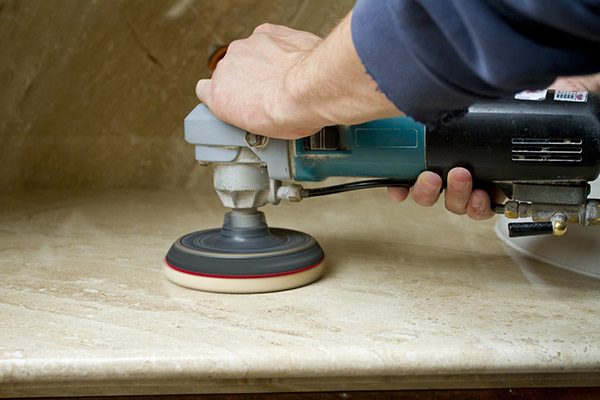
Guide on How to Polish Granite and Marble Countertops
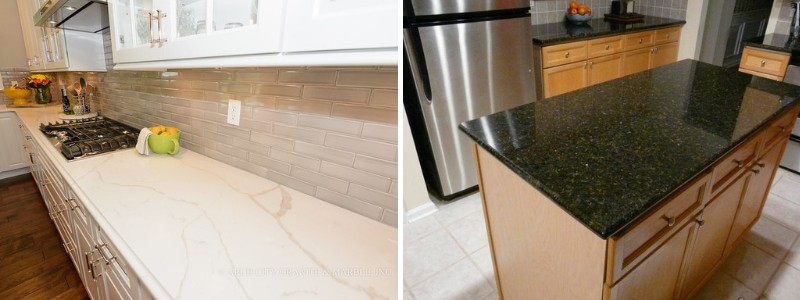
Related articles:
- Marble Countertops Backsplash
- DIY Refinishing Cultured Marble Countertops
- Marble Countertops In Bathrooms
- Cultured Marble Countertops
- Gray Kitchen Cabinets Marble Countertops
- Modern Kitchen Marble Countertops
- Refinish Cultured Marble Countertop
- Carrara Marble Countertops Bathroom
- Marble Countertops Types
- How To Refinish Marble Countertops